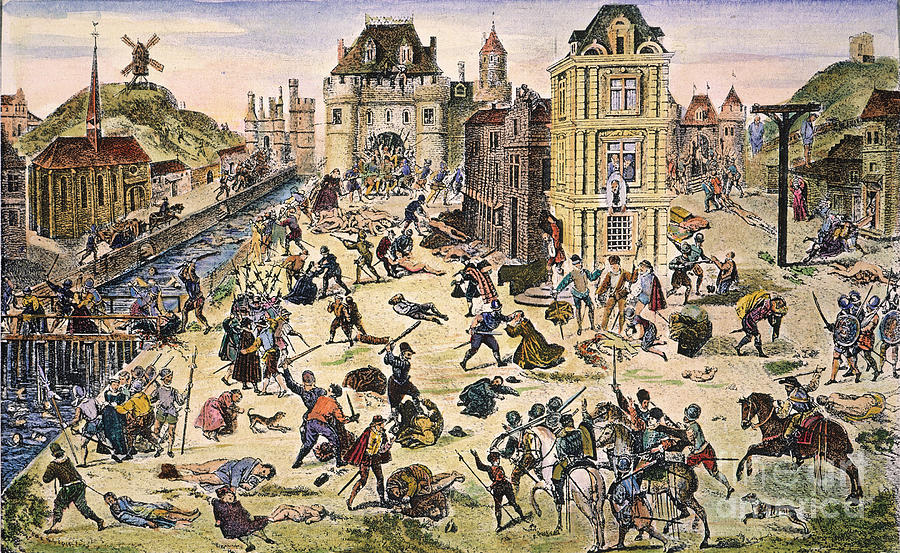 |
| Huguenots |
Huguenots is the name given to Protestants in France who were severely persecuted for their faith. The origin of their name is unclear, but its roots probably go back to a German word meaning “confederates” or “conspirators,” reflecting public suspicions about the foreign and subversive intentions of the group.
The Reformation spread into France almost as early as it shook and divided Germany. In 1523, two years after Martin Luther’s excommunication from the Catholic Church, Jean Vallière was burned at the stake in Paris for his Protestant beliefs.
John Calvin
Government measures taken against the Protestants backfired, and by 1555 there was a Calvinist congregation in Paris. In 1559, Protestant deputies from all provinces assembled in Paris and formed the National Evangelical Church. Within two years, the number of churches went from 15 to 2,150.
Their strategy for survival was to find allies among the nobles and obtain their patronage. They organized themselves into military and political units, unified with the church structure. Close-knit, clannish, and theocratic, they were identified by the name Huguenots.
Although the Huguenots won the right to organize, matters took a dark turn in the late 1550s when the French Crown and the noble family of the Guises forcefully countered the Huguenots. The last straw was the Vassy massacre in 1561, and the Huguenot nobles took up arms.
Seven wars were fought over the next period, summed up in the Thirty Years’ War. Many slaughters of Protestants in French cities occurred, most infamously in the Massacre of St. Bartholomew’s Day (1572). The next year, the Huguenot Party was formed, insisting on full liberties for their religion.
In the next decade, they formed themselves as a state within a state, and their internal governance was tight and severe. They were so effective at discipline that rival Catholic groups in the Counter-Reformation imitated their organization.
 |
| Massacre Of Huguenots |
Peace came with the Edict of Nantes in 1598, imposed on the French people by Henry IV, a Huguenot-turned-Catholic. The regime and the public had spent themselves on violence and now foreign interference threatened state sovereignty. In the streets, however, tensions continued to fester, making the edict hold precariously.
The Huguenots meanwhile pushed through their jadwal so that by 1611 they were recognized as a provisional republic within France. This arrangement began to unravel in 1615 when three Protestant provinces temporarily took up arms against the central government, and other signs of dissatisfaction arose over the next 10 years.
Cardinal Richelieu, the master tactician of French federal government, concluded that the edict would only destroy the unity of France. In 1626, he mounted a full-scaled attack on Huguenot strongholds. Within three years, all that the Protestants had left was a guarantee of freedom of conscience.
Under Louis XIV (1661–1715) all Protestant rights were gradually withdrawn. Nantes was officially revoked in 1685, and massive emigration of Huguenots ensued. The loss of the Huguenots dealt a severe blow to France’s efforts to keep up with their rivals during the Industrial Revolution: a generation of entrepreneurs had emigrated. Just before he died, Louis announced that Protestant exercises in France had ceased.
EmoticonEmoticon